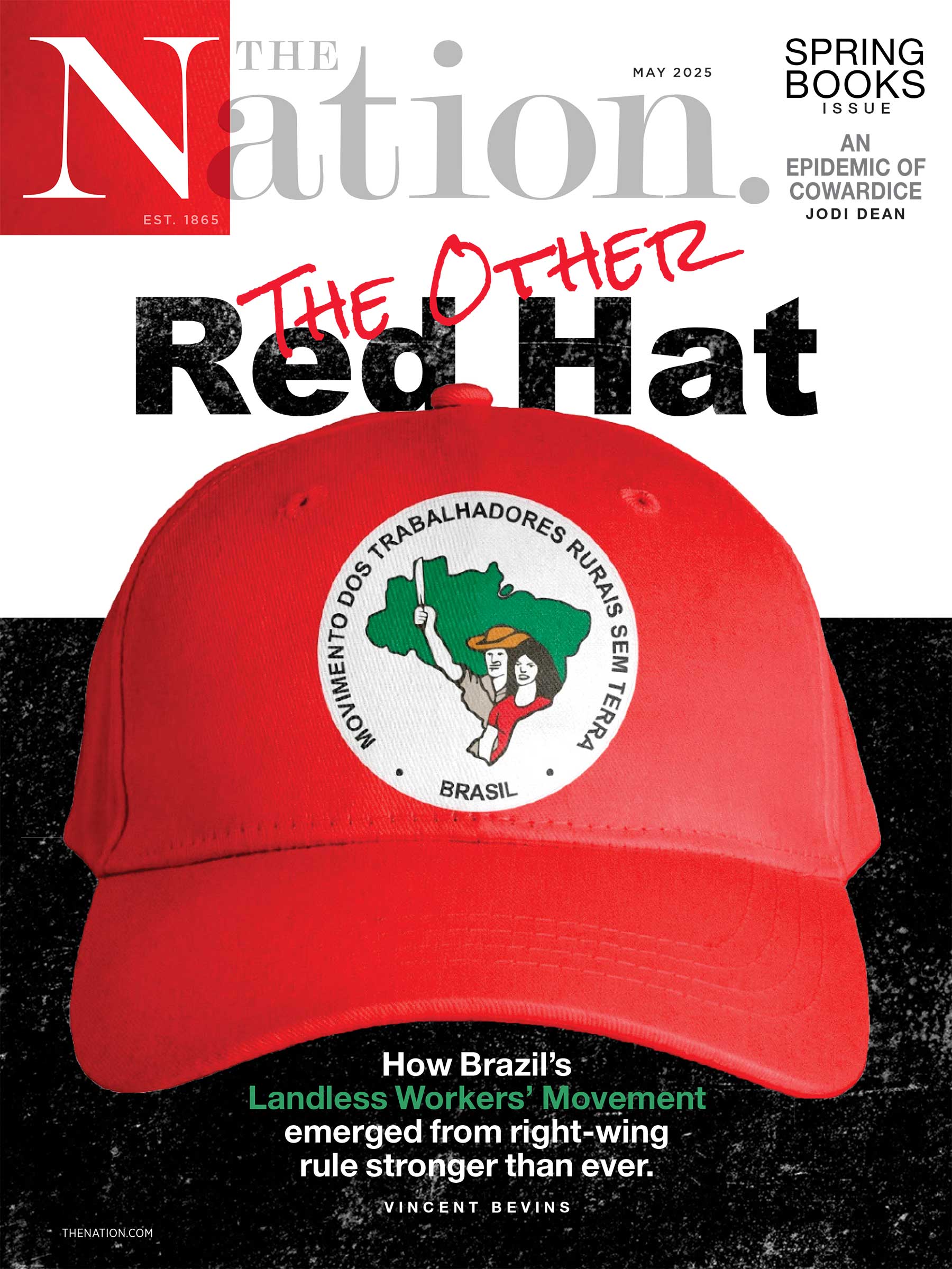The “Freedom Convoy”—which for a week shut down trucking traffic at the Ambassador’s Bridge separating Detroit from Windsor, Canada, and led to a siege of Ottawa—has given a certain cohort of contrarian pundits a chance to chortle. Why are so many on the left refusing to support a truckers’ protest? Isn’t there hypocrisy here? Batya Ungar-Sargon, deputy opinion editor at Newsweek, said, “This is the biggest labor action I recall seeing in my life and the Left is on the other side of it. It has to do with the shift in the Democratic Party which used to be the party of the working class and is now the party of the pajama class.” Alluding to criticisms of the convoy, Glenn Greenwald sarcastically tweeted, “Many people love ‘workers’ but not workers.”
The truth is more complex than these contrarian takes allow. The Freedom Convoy was organized by a transnational far-right network and funded mostly by the well-to-do conservatives. The social base of the protest is among owners of family-run businesses, what classical Marxists call the petite bourgeoisie. On top of this class layer of reactionary small capital is a social organizing infrastructure built by right-wing evangelical protestants. Many of the leaders of the convoy speak the language of Christian triumphalism.
The goals of the protest are murky and shifting. Originally, some leaders of the convoy released an extravagant “memorandum of understanding” calling for the overthrow of the government of Canada and its replacement by a junta made up of convoy leaders, members of the Canada’s unelected Senate, and the governor’s general (a ceremonial post appointed by the Queen). That document has since been scrubbed and the group now talks in vaguer terms about “freedom” and ending vaccine mandates
Yet the far-right origins of the protest shouldn’t be an excuse for ignoring the fact it is attracting the support of a segment of the population that doesn’t identify with the far right but does feel economically marginalized and hurt by a pandemic now entering its third year.
We must understand the Freedom Convoy dialectically. While the protest is led by people who aren’t workers, the passions the protests speak to are resonating with workers, and left-wing political activists need to figure out how to address this anger.
The leadership of the protest is thick with far-right activists who have been prominent in white nationalist, anti-environmental, and anti-labor movements. In Jacobin, Emily Leedhan noted that one Freedom Convoy organizer is James Bauder, who previously helped run the United We Roll convoy. This earlier convoy, Leedhan wrote,
planned an anti-union protest where convoy members threatened to dismantle the picket line and run over workers. Bauder livestreamed the protest, at which workers say convoy members harassed them and shouted obscenities from a megaphone. The episode’s anti-labor pièce de résistance came when the employer of the picketing workers gave the convoy an in-person shout out at a press conference before the protest.
Popular
"swipe left below to view more authors"Swipe →
It’s unclear how many actual truckers, as opposed to owners of trucking firms, are in the convoy. The class composition of the movement became clear after a leak from the Christian crowdfunding site GiveSendGo revealed that most donors were from the United States (although more money came from Canadians, who donated more per individual).
Most of the donors seemed to be well-off conservatives. As The Washington Post reported: “Residents in wealthy enclaves across the United States—from Beverly Hills, Calif., to suburbs of Austin, to Florida beach communities—sent millions of dollars to support trucker convoys that occupied the Canadian capital and shut down commerce at key border crossings between the two nations.” The newspaper added, “The richer an American community was, the more likely residents there were to donate, and the biggest number of contributions often came from communities where registered Republicans made up solid majorities, according to the review of more than 55,000 U.S.-based donations through the Christian fundraising website GiveSendGo.”
Yet, despite its fringe and extremist organizers and support from suburban business owners, the Freedom Convoy is speaking to discontent that is widespread. Polls show that, while the convoy is unpopular with two in three Canadians, its message of anger at the mandates is resonating with a significant minority.
Writing in the Toronto Star, pollster Frank Graves of EKOS Research noted, “Sympathy with the protests, and their objectives, is felt by a third of Canadians—and by no means a random third but a third defined by clear demographic and attitudinal factors.” Those who have sympathy for the convoy tend to be poorer, younger, and less educated.
Describing this group, Graves observed,
it may be that economic anxieties are driving these protests as much as the named issues of vaccines and mask mandates. Those most adamantly opposed to masks and mandates have (by far) the bleakest economic outlook, resulting in a generational resentment toward an economy that has seen younger Canada faring much worse than their parents or grandparents at a similar stage of life cycle. Wage stagnation exacerbated by inflation and affordability is a key force expressing itself in housing and many other pocketbook issues.
In Canada as elsewhere, the burden of the pandemic has fallen on the working class. Canada has seen stricter measures against the pandemic than the United States, especially during the Omicron wave. In Canada’s largest provinces, Ontario and Quebec, according to the National Post, governments have “closed schools and imposed blanket bans on indoor dining, gyms and bars.” As the pandemic enters its third year, many Canadians have become more pessimistic and feel that governments are dealing with the problem by imposing duties without offering economic relief or a path forward. This is producing stress and anger. The Freedom Convoy isn’t a working-class movement. But it will be able to harvest and exploit working-class anger unless the plight of poorer Canadians improves. The Freedom Convoy should be a wake-up call for not just Canada but the wider world as well.


